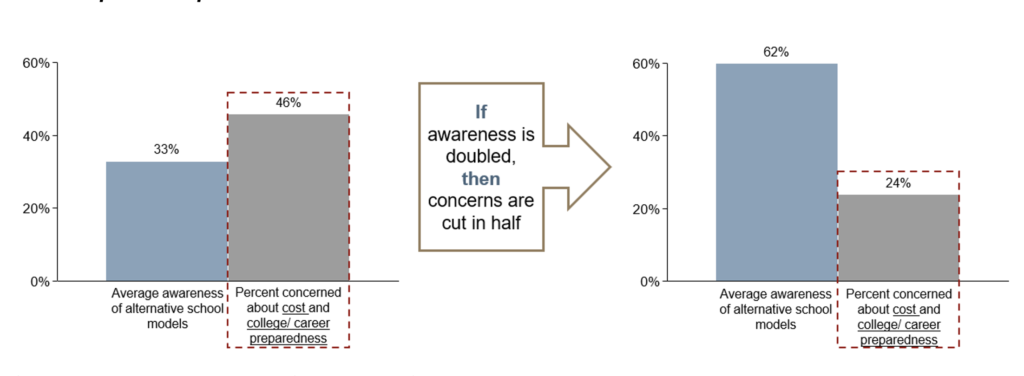K-12 Predictions for 2026
December 18, 2025 BlogThe K-12 market has entered a period of structural change, driven not by a single shock, but the…
With support from Stand Together Trust and the Walton Family Foundation, we published School Disrupted 2022, the second iteration in our ongoing series focused on K-12 enrollment trends. School Disrupted, a three-part publication, details how families are making post-pandemic educational decisions for their children and the impact on school enrollment patterns and parents’ future aspirations. This month, we recap the most important takeaways drawn from two nationally representative surveys of more than 6,000 K-12 parents conducted in May 2022.
We will continue the investigation of the K-12 landscape’s evolution in our next publication, Choose to Learn, explores how our K-12 system can deliver a more durable union between academic growth, extracurricular passion and personal fulfillment that parents desire. In part, this should occur at the intersection of in- and out-of-school opportunities consistent with parents’ values and needs, and regardless of life or economic circumstances.

Notes: Pre-COVID-19 figures are 2020 NCES estimates; Fall 2020, Spring 2021, and Spring 2022 enrollment are estimated from proprietary survey data.
Sources: Tyton Partners Summer 2022 K-12 School Models Survey, Tyton Partners Fall 2021 K-12 Alternative Models Survey, Tyton Partners Spring 2021 K-12 Alternative Models Survey, NCES, AEI ReturnToLearn Tracker, Tyton Partners analysis.
Such a decline in district public school enrollment has important consequences for all K-12 education. Lower student enrollment decreases state and federal funding for public schools while most school costs remain constant. Reduced revenue from serving fewer students may result in fewer or lower quality learning spaces and environments, which snowballs into more dissatisfaction with public schools and continued decline in enrollment. And, declining public school enrollment increases pressure on charter and private schools, among other emergent models to support an influx of new students. These schools may not yet be prepared to serve more students, particularly those with special needs.
Parents indicated that multi-site schooling, a model in which students pursue learning in more than one location often including a conventional school setting and other settings such as the home or a community-based organization, is an especially popular student-centric learning experience. While about a third of parents with homeschooled children or children in public school report participating in multi-site schooling, more than half of those with children in private school report the same. In total, we estimate 15 million students are currently participating in a multi-site schooling model.

Sources: Tyton Partners 2022 K-12 School Models Survey, NCES, School Disrupted 2021, Tyton Partners analysis
Our analysis reveals that parents who prefer student-centric learning experiences were more likely to have shifted their children out of district public schools and into charter schools, private schools, or homeschooling during the past year. At the same time, the rise of multi-site schooling models may represent a bridge between parents’ preferences for more student-centric environments and the existing benefits (e.g., convenience, affordable “cost”) of district public schools.
Awareness of alternative school models proves to be key in understanding actual potential future enrollment as two interconnected themes emerged from parents’ responses:
Our analysis reveals that awareness significantly predicts parents’ reported likelihood of enrolling in alternative school models in the next three years. More specifically, a 10% incremental increase in overall awareness of alternative school models corresponds to a 40% increase in likelihood of enrolling. This occurs because as awareness of these models increases, concerns about affordability and college and career preparation and readiness decline considerably. In fact, a near doubling of awareness among parents reduces their primary concerns by 50%, resulting in greater willingness to pursue an alternative school model.
Informed parents express fewer concerns about alternative school models

Sources: Tyton Partners 2022 K-12 School Models Survey, Tyton Partners analysis